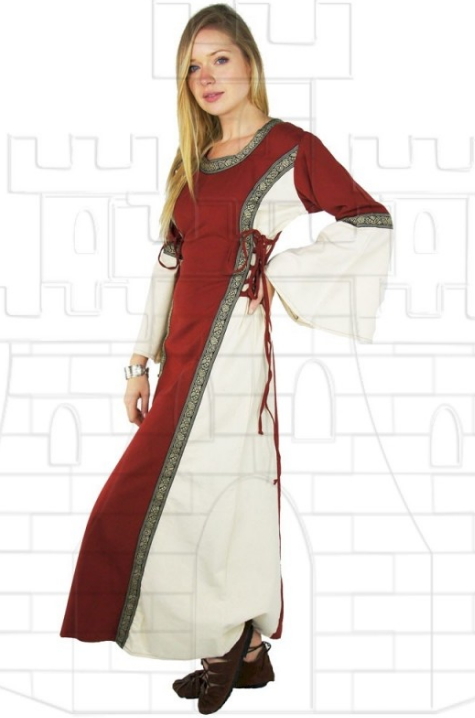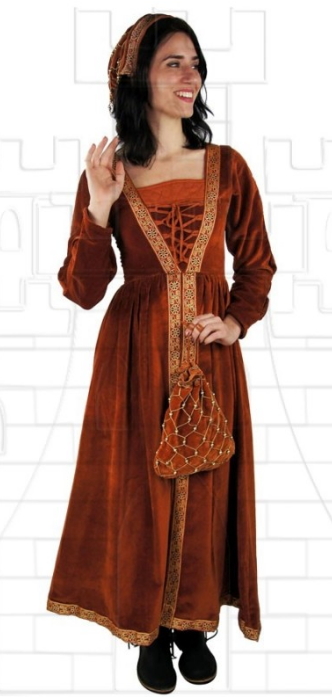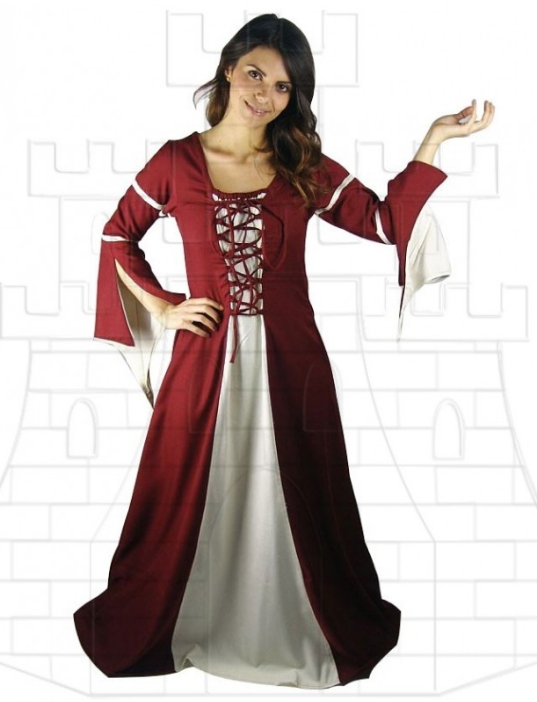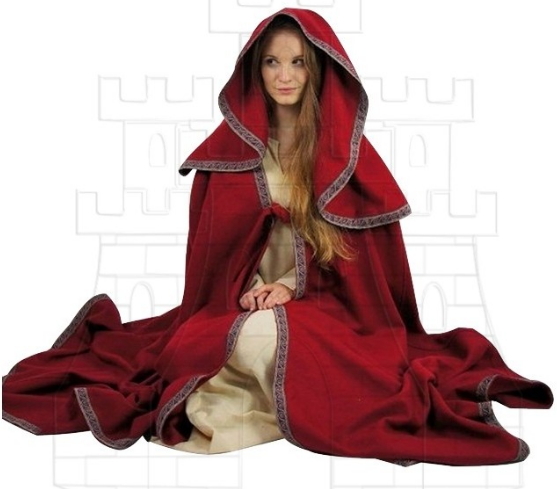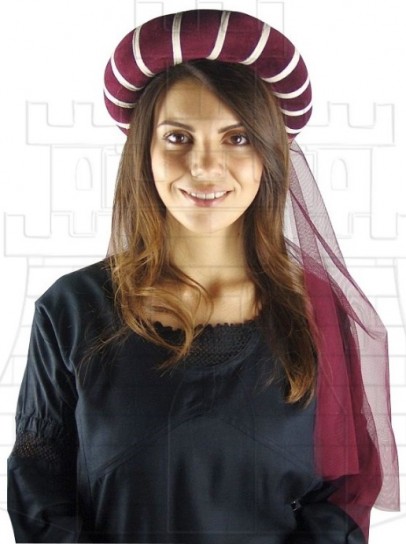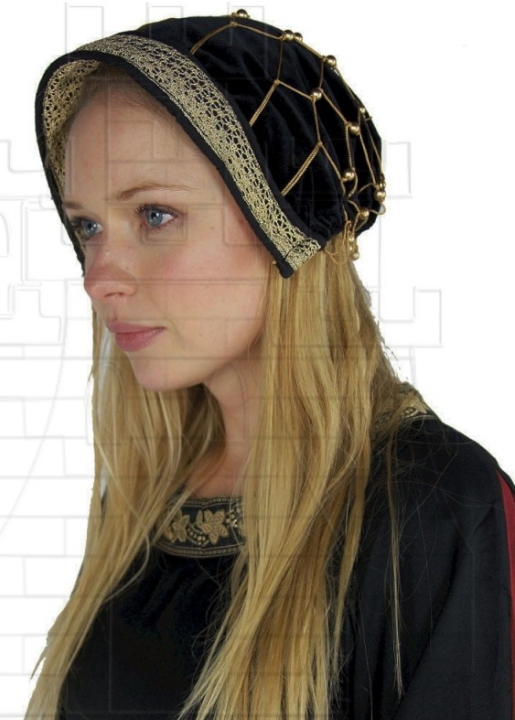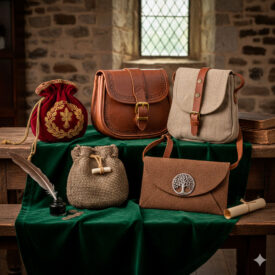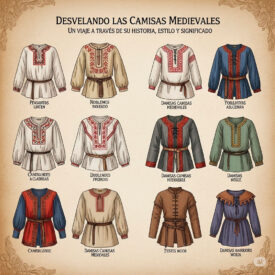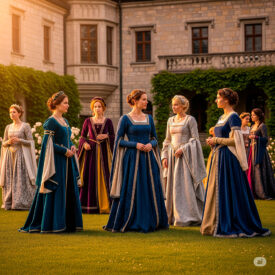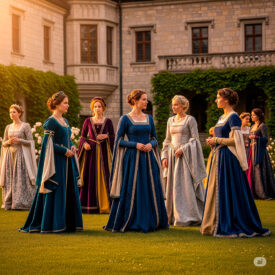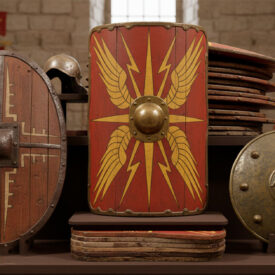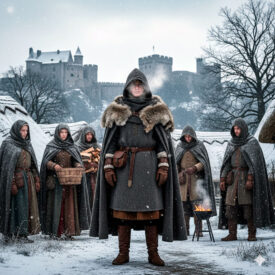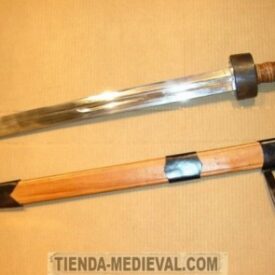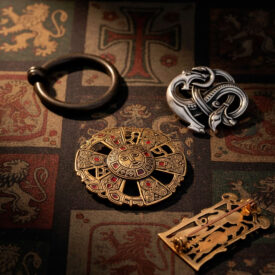The Middle Ages, a vast period that spanned approximately a thousand years, from the fall of the Western Roman Empire in the 5th century to the Renaissance in the 15th century, was a time of constant change and profound social transformation. During this millennium, women’s clothing evolved in a fascinating way, transitioning from simple protection against the elements to a complex system of communication and a mirror of society. The choice of fabrics, colors, and cuts was not random, but followed strict rules and conventions that reflected and maintained the social hierarchy of the time. In the medieval era, societies were highly stratified, so according to the social stratum to which each individual belonged, so too was their clothing and their manner of dress. This article will deeply explore the rich history, materials, symbolism, and practical aspects of medieval dresses for women, revealing how each thread and every color wove a social narrative.
The Historical Evolution of Medieval Women’s Dresses
Medieval women’s clothing underwent a notable transformation, linked to the social and economic changes of the era. From basic functionality to sumptuous ornamentation, each period left its distinctive mark on women’s medieval dresses.
Early Middle Ages (5th to 10th Centuries): Simplicity and Functionality
In the early centuries of the Middle Ages, clothing was relatively simple and functional. Women typically wore long, loose tunics, known as ‘cotte’, made of linen or wool, which were cinched at the waist with a belt. Over this, a cloak was often worn, fastened with a brooch. Colors were natural and muted, reflecting the availability of dyes and the primacy of practicality. Social differences were more apparent in the quality of fabrics and jewelry than in the complexity of the design. Clothing was primarily sewn by the women of the family, which highlights the domestic and artisanal nature of garment production during this period.
High Middle Ages (11th to 13th Centuries): The Rise of Courtly Culture
With the rise of courtly culture, clothing became more complex and differentiated. The ‘cotte’ was cut more fitted to the body, often with long, narrow sleeves, marking a shift towards a more defined silhouette. Over it, the ‘surcot’ appeared, a sleeveless over-garment that could be richly decorated and which, on occasion, allowed the inner garment to be seen through side openings. During this time, extremely long dresses that dragged on the floor became popular, a clear sign of wealth and leisure, as this length prevented physical labor. Noble ladies began to wear more colorful and vibrant dresses.
Late Middle Ages (14th to 15th Centuries): Extravagance and Variety
This period brought the greatest changes, with fashion becoming more extravagant and varied. New tailoring techniques allowed for the creation of clothing that enhanced and accentuated body shapes. The ‘cotehardie’, a fitted dress that fastened or tied at the sides, marked a radical break with previous loose garments. Sleeves became longer and wider, often with openings, adding drama to the silhouette. The ‘houppelande’ also became popular, a wide outer garment, often fur-lined, with extremely wide sleeves and long, ample skirts. Headpieces became increasingly elaborate, from the simplicity of ‘templers’ to the extravagance of a butterfly headdress, complementing the opulence of the attire. The Gothic style began to inspire designers, leaning towards an elongated and more stylized silhouette.

The Art and Technique: Materials and Production of Medieval Clothing
The choice of materials and their production process were fundamental in determining the value and status of a medieval dress. The availability, cost, and quality of fabrics were direct indicators of the social position of the wearer.
Common Materials: The Basis of Everyday Dress
Linen was the most used material for everyday clothing, being durable, easy to produce, and wash. Its versatility made it ideal for inner garments and daily wear. Wool was also widespread, produced in various qualities, from thick and robust fabrics for winter to fine and light fabrics for summer; it was the preferred material for outer clothing due to its durability and warmth. Hemp was used as an alternative to linen for sturdy work clothes, especially for those performing harder labor.
Luxury Materials: Symbols of Wealth and Power
For the upper classes, silk, imported mainly from the East via the Silk Road, was the most coveted material. Fabrics like damask, brocade, and velvet (made from silk or fine wool) were symbols of wealth and power, often interwoven with gold or silver threads, which exponentially increased their value. Furs, such as ermine, sable, and marten, were highly prized not only for their warmth but for their luxury, and were used as linings or embellishments, especially in noble garments. Fabrics increased in sumptuousness when the Crusaders introduced cotton, diaphanous muslin (whose name is derived from Mosul, Iraq), damask (from Damascus), and gauze (from Gaza, Palestine). These materials transformed medieval attire and gave it an exotic and opulent air.
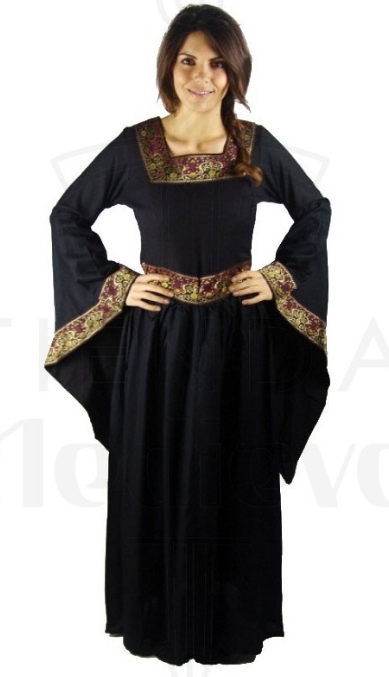
The Art of Color Production: A Costly Luxury
The production of dyes was a laborious and extremely costly process. Dyers used natural materials such as woad for blue, weld for yellow, or madder for red. Imported dyes like Tyrian purple or cochineal crimson were extraordinarily valuable and could exceed the price of the fabric several times over. The durability of colors depended on the quality of the dyeing and the mordants, with high-quality dyes retaining their vibrancy for years. Master dyers developed secret recipes, contributing to the exclusivity of certain shades. Dyes for coloring clothes in the medieval era were expensive, and only nobles could afford them, which made bright colors a clear distinguishing mark of the elite.
Technological Advances in Tailoring
The introduction of the horizontal loom in the 11th century allowed for more efficient fabric production and the creation of wider cloths, facilitating the making of larger and more complex garments. Spinning wheels in the 13th century revolutionized thread production, leading to finer and more uniform threads, which improved fabric quality. Improvements in dyeing techniques expanded the range of colors and their durability. The development of buttons and buttonholes in the late Middle Ages enabled more fitted cuts, a key element for the fashion of the era, allowing for greater adaptability and sophistication in the design of medieval dresses.
A Reflection of Society: The Social Significance of Clothing
Clothing in the Middle Ages was a visual language that immediately conveyed information about a person’s rank, wealth, profession, and even marital status. Every element of an outfit, from the fabric to the color and the amount of material, was a sign that society knew how to decipher.
Social Classes and Clothing: A Visible Code
-
- Noble Ladies: They displayed their status with sumptuous dresses made of precious fabrics like silk, velvet, and fine wool, in bright colors such as purple, scarlet, or deep blue. Gold and silver embroidery, adornments with precious stones, pearls, and furs (especially ermine) underscored their wealth and position. The length of their dresses, with trains and wide sleeves, indicated that they did not need to perform physical labor. Kings and queens tended to always wear bright colors like royal red and blue. Generally, the fabrics used by royalty, such as velvet and silk, were imported, and only kings were allowed to wear purple or golden silk.
- Bourgeois Women: Although subject to strict regulations, wealthy bourgeois women tried to imitate the nobility with high-quality fabrics and discreet but expensive dyes. Their clothes often showed more muted tones such as brown, green, or light blue, using more economical dyes, but with superior quality to that of the lower classes. A fashion spread for imitating nobles, copying their tastes, manners, and customs, which favored merchants and tailors.
- Peasant Women: Their clothing was primarily functional and made of coarse fabrics like linen or wool. Natural, undyed colors or muted tones obtained from inexpensive vegetable dyes such as walnut shells or woad predominated. The clothing was durable and practical for working conditions in the field.
The Symbolism of Colors: A Coded Language
Colors had a deep social, moral, and religious meaning, and their use was often regulated by dress codes. The colors most used by elite women were lilac, black and white (for mourning), light blue, gold, red, silver, green, yellow, and pink, and they were used in bright dyes, as this required a greater quantity of dye and therefore demonstrated greater purchasing power.
- Red: Symbol of power, passion, courage, and often reserved for nobility and wealthy bourgeois. It was also related to marriage and fertility.
- Blue: Embodied fidelity and loyalty, and was an important color for high society, reinforced by its association with the Virgin Mary. Dark blue was the color of common people in the 13th century.
- Green: Associated with youth, fertility, hope, and the natural cycle of life and renewal. It was popular among young single women.
- Gold and Yellow: Genuine gold was reserved for nobility and symbolized wealth and divine favor. Yellow tones obtained from saffron or weld were an alternative for wealthy bourgeois women. However, yellow could also be associated with envy and betrayal.
- Purple: Considered the royal color par excellence, its production was so costly that it was sometimes weighed in gold, being an exclusive privilege of royalty.
- White: Represented purity, innocence, and humility. It was central to religious feasts and weddings. The production of pure white fabrics was a considerable effort.
- Black: Gained importance in the late Middle Ages as a sign of authority and and prestige, especially among wealthy bourgeoisie and noblewomen, although it was also associated with mourning.
- Brown (brown, grey, yellowish): Corresponded to the lower bourgeoisie, lower clergy, servants, peasants, and the poor.
It is important to note that monochrome clothing (all one color) was better regarded than polychromy, which was a sign of inferiority, adding another layer of complexity to the language of medieval attire.
Sumptuary Laws: Regulating Luxury and Social Order
To maintain social order and curb excessive luxury, strict ordinances on clothing were enacted in many cities. These laws regulated what materials, colors, color combinations, and jewels could be worn by different social classes, with considerable fines for infringement. For example, nobility was allowed to wear velvet or silk, while artisans and peasants were prohibited from expensive fabrics. Clothing was, therefore, a way to communicate and reinforce social status, rank, lineage, or marital status, and these laws ensured that the message was clear and unambiguous.

Practical and Everyday Aspects of Women’s Clothing
Beyond symbolism and status, medieval women’s clothing also addressed practical needs of daily life, adapting to the activities and conditions of each social class.
Daily vs. Festive Wear: Functionality and Celebration
The everyday clothing of peasant women and female workers was characterized by being robust, functional, often mended, and in muted colors to conceal dirt and withstand the wear and tear of physical labor. On the other hand, festive attire, for special occasions such as weddings or religious festivals, was of better quality, with finer fabrics, brighter colors, and more elaborate embellishments, such as embroidery and furs, reflecting the importance of the event and the desire to show one’s best.
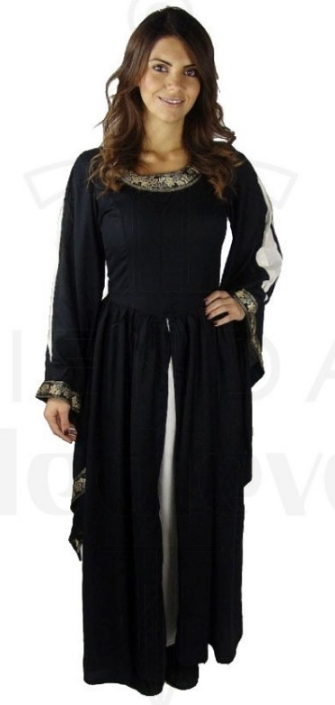
Hygiene and Care: A Challenge of the Era
Hygiene was valued, and underwear played a crucial role as it could be washed more frequently than outer garments, which were heavy and difficult to clean. Caring for dyed garments was a challenge, as many dyes faded with washing. Therefore, valuable garments were brushed or aired, and special techniques were developed such as washing with soapwort or using vinegar to fix colors, attempting to preserve the vibrancy and quality of expensive dyes.
Underwear: The Hidden Layer of Clothing
Medieval women did wear underwear, an essential part of their attire that provided comfort, hygiene, and an additional layer of warmth.
- Chemises: The most basic and widespread inner garment was the camisole or ‘chemise’, a loose garment, generally made of linen, worn directly against the skin. It served as a protective and insulating layer, and could be easily washed, protecting more expensive and difficult-to-clean outer garments. For wealthy women, they could be made of fine linen or silk, and adorned with embroidery or lace that sometimes showed beneath the outer dress, adding a touch of luxury even to what was not directly visible.
- Petticoats: Towards the end of the Middle Ages, petticoats gained popularity to support voluminous skirts. Initially simple, they evolved to be more complex, even reinforced to create a specific silhouette, especially with the rise of Gothic fashion that sought a more stylized figure.
- Hosiery and Hose: Stockings and hose, generally made of wool or linen, covered the legs up to the thigh or hip, providing warmth and protection. They were held up with garters or laces, being a practical element for cold weather and for modesty. Royalty and noblewomen wore breeches, hose, and shirts as underwear, covered with a silk or linen petticoat, showing that even hidden layers reflected status.
Accessories and Regional Peculiarities: Details that Make a Difference
Accessories and regional differences added layers of meaning and style to medieval women’s clothing, completing the image and revealing even more about the person wearing it.
Headwear: Beyond Hair Coverage
Headwear was much more than simple head coverings, functioning as clear indicators of status, professional group, and marital status. Noble ladies wore elaborate headpieces such as the hennin (a tall, conical coif), combined with veils or coifs that completely covered married women’s hair, a sign of modesty and status. Single women wore simpler headwear or left their hair loose. Women covered their heads with coifs or headpieces, secured with ribbons tied under the chin. Young women wore the coif alone, and older women added a toca on top, demonstrating a progression in dress with age and marital status.
Shoes: The Step of Status
Shoes also indicated status. Nobles and wealthy citizens wore pointed-toe shoes, whose length increased with social rank, symbolizing wealth and leisure as they were impractical for labor. Peasants and artisans wore robust and functional thick leather shoes, suitable for their daily tasks. Inside the castle, the nobility used a pair of special shoes, and for outdoor excursions, they had another pair made of wood and leather that they wore over their castle shoes, demonstrating the adaptability of clothing to different environments and activities.
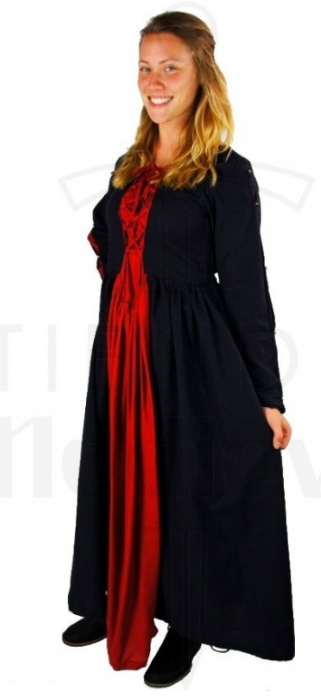
Belts and Bags: Functionality and Distinction
Not only functional, but important symbols of status. Belts crafted with metals and precious stones were worn by nobles and burghers, and from them hung bags, knives, or other objects, demonstrating both utility and the ability to flaunt wealth.
Cloaks and Mantles: The Grand Statement of Status
Garments expressive of social status. Long and voluminous cloaks made of precious fabrics, often fur-lined, were a sign of wealth and power, with length indicating high rank. The mantle, tunic, and cloak were symbols of status and not merely for protection from the cold, a clear example of how functionality intertwined with social symbolism.
Regional Differences and Cultural Influences
Medieval women’s clothing was not uniform across Europe; regional variations and external influences created a rich diversity of styles.
- Northern Europe: Thick wool fabrics and multiple layers predominated to protect from the cold. Viking women wore tunics fastened at the shoulders with brooches, and adorned their clothing with silver or bronze brooches and necklaces, reflecting the harsh climate and the importance of metals.
- Southern Europe: Clothing was lighter and airier, with fine fabrics like silk and cotton. Dresses were fitted and accentuated the figure, and vibrant colors and patterns were popular, influenced by trade with the East and a warmer climate.
- Eastern Influences: Trade and the Crusades brought exotic fabrics and new fashion styles to Europe, such as silk from China and Persia, which enriched Western wardrobes. In Eastern Europe, Byzantine and Asian influences were seen, with long tunics and sarafans. Ottoman fashion also influenced Southeast Europe, with caftans and wide trousers, demonstrating the cultural interconnectedness of the era. External relations between kingdoms brought commercial exchange, and thus silks from Italy, Flemish cloths, linens (for sheets and lingerie) from Holland, and petticoats from Germany began to arrive, expanding the palette of materials and styles available.
Fashion and Trade: A New Era in Clothing
As the Middle Ages progressed, fashion ceased to be exclusively a domestic matter and became an economic and social force. The growing demand for more sophisticated and varied garments boosted trade and specialization in tailoring.
The Imitation of Nobility and the Rise of Trade
Over time, a fashion for imitating nobles, copying their tastes, manners, and customs, spread. This desire to emulate the luxury of the elite was not limited to the nobility but permeated the wealthy bourgeois classes. This trend popularized purchases and, incidentally, favored merchants who, in turn, became affluent customers, especially tailors who acquired a wide variety of items. Women, except in the poorer classes, no longer made clothes at home, nor did they resort to ragpickers, sellers of used clothes. Now, whoever could, bought cloths, linens, and silks directly from merchants, which marked a significant change in clothing consumption and production habits.
The Variety of Fabrics and Qualities
There were expensive, medium, and cheap fabrics, from the most basic wools to the most elaborate serges. Depending on the social class, a type of garment or accessory was purchased, but above all, the quality of the fabrics varied. This diversity of options allowed people to express their status and aspirations within the limits of sumptuary laws and their economic possibilities. Royalty decorated their garments with embroidered lace and jewels to make the attire look more luxurious, as well as with animal furs such as ermine, mink, fox, etc., elevating clothing to a form of art and an unparalleled declaration of power.
Medieval women’s clothing was much more than a simple covering for the body. Through its evolution, the materials used, the richness of its colors, and the variety of its accessories, a complex system of non-verbal communication was revealed that reflected and reinforced the strict social structures of the time. Every detail of a woman’s attire provided immediate information about her social status, economic power, and cultural identity, allowing people in the Middle Ages to recognize rank at a glance and interact accordingly. Understanding this “language of clothing” is key to interpreting historical sources and appreciating the sophisticated interaction between material culture and the social order of medieval Europe. If you are fascinated by this journey through time and wish to explore the beauty and authenticity of medieval clothing, we invite you to discover a wide collection of medieval dresses for women and accessories that will transport you directly to this fascinating era. Find the perfect outfit to relive the history and style of ladies from yesteryear.
